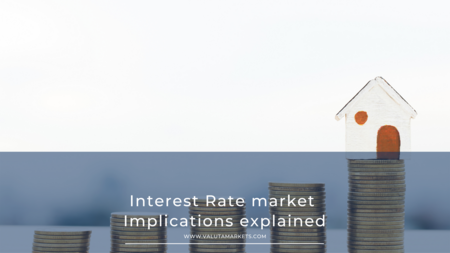Interest rates have a significant impact on investment and finances. It is for a good reason; it affects your individual financial life and drives the behavior of investors and consumers.
Investors are always alert to news related to interest rates due to their impact on assets and market movements. Changes in interest rates have both negative and positive effects on the markets. The central bank, for instance, changes the interest rate to respond to economic health.
When the economy is somewhat weak, central banks lower the rates and increase the rates when the economy is overheating.
Interest rate fluctuations caused by decisions made by the Federal Reserve are designed to stimulate or support economic activity. The changes have a ripple effect on a wide range of investments.
How Do Interest Rates Work?
Interest rate is the cost of debt; it is the amount a lender charges a borrower for a loan. It is a percentage of the amount borrowed.
The amount you pay for student loans, your credit card, and mortgages, among other types of loans, is determined by the benchmark set by the Federal Reserve. The Fed is also responsible for setting the standard for major loans like bonds.
When the interest rates increase, the cost of borrowing increases; the reverse is true when the interest rates are reduced.
How Do Interest Rates Impact the Market?
1. Inflation
The federal funds rate, which is the rate at which banks borrow from each other, affects all other loan rates. The federal funds rate can change daily and is used to identify movement in other interest rates.
The changes in interest rates impact inflation. During inflation, the prices of services and goods increase over time, and it is usually an indicator of a healthy economy. However, when inflation is not curbed, it can reduce consumers’ purchasing power considerably.
The Federal Reserve keeps inflation in check by increasing the federal rates to control the increasing prices. An increase in federal funds rates causes an increase in personal loan and mortgage rates. When the cost of borrowing is high, people spend less, the demand for goods drops, and there is a consequent drop in inflation.
Investors often opt to keep their money in bonds or savings accounts when the interest rates are high. Investors tend to move their money into high-yield and safe investments from risky equities.
2. Stocks Movement
When interest rates fall, stocks rise. When the interest rate is low, the cost of borrowing is low, enabling companies to borrow and expand their operations. When the interest rates are high, the cost of debt increases, making it difficult for companies to borrow, affecting their growth.
The high cost of debt results in low revenues, affecting the company’s overall value.
3. Real Estate Investment Trusts (REITs)
The price of REITs increases with an increase in interest rates and falls when the interest rates fall. Often the interest rates will increase when the economy is expanding. This is because the demand for money increases while its supply is fixed.
To balance the money available in the market, the interest rate increases. When interest rates are high, funding real estate investments becomes expensive.
4. Bonds
Bonds are inversely related to interest rates. When the interest rate increases, the price of market bonds falls. When the interest rate is low, the value of bonds decreases.
Note that most bonds have fixed interest rates. The bonds thus are appealing when the interest rates are low. This is because the inverse relationship increases the demand and price of the bonds.
When the interest rates are high, the demand and price of bonds drop, making them less attractive to investors. When the interest rates are high, the bonds become less valuable as the coupon payments are often lower than the prevailing bonds in the market.
5. Tech Stocks
Just like bonds, tech stocks have an inverse relationship with interest rates. Rising interest rates usually hurt tech stocks.
Tech stocks are growth stocks, and high-interest rates cause a high price-to-earnings ratio and low dividend payments. High interest rates slow down the growth of tech companies, and the high cost of borrowing slows down investments into growth prospects and innovation.
When the interest rates are high, investors avoid the high-growth tech stocks and go to more stable companies.
6. Volatility
Investor speculations and feelings toward the rise or fall of interest rates can cause market swings. Whether it is economic data or news from the Federal Reserve, investors always anticipate how the interest rates will be affected. They usually begin panic selling when they expect or speculate on a rise in the interest rate, resulting in short-term volatility.
Conclusion
Changes in the interest rates can create volatility in the market, which investors usually capitalize on or make moves to hedge their investments against. Interest rates affect consumer spending, the price of stocks, consumer spending, bond interest rates, and inflation. Investors need to focus on long-term goals as it usually takes several months before the impact of changes in interest rates is felt.

